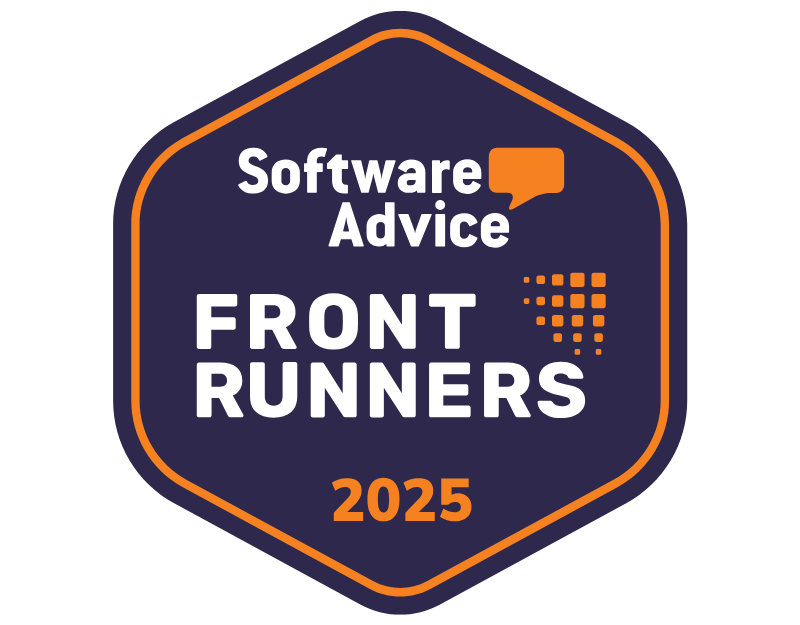Managing cash flow is critical for maintaining financial stability. At the core of these challenges lies accounts receivable management – a critical function that directly impacts an organization’s liquidity, cash flow health, and overall financial health. CFOs who know what data to track and how to access it efficiently and consistently will have a distinct advantage over their peers with no visibility. Leveraging comprehensive real-time accounts receivable reports that transform raw financial data into actionable insights, enables CFOs to see problems right away and make informed decisions that drive business success.
Modern CFOs understand that effective A/R management extends far beyond traditional collection activities. It requires sophisticated reporting mechanisms that provide real-time visibility into customer payment behaviors, collection performance, and cash flow patterns. These accounts receivable analysis reports serve as the foundation for strategic decision-making, risk assessment, and operational optimization across the entire organization.
Why Accounts Receivable Reports Matter for CFOs
Accounts receivable reports represent the financial backbone of decision-making that is in line with your company’s accounts receivable strategy. These comprehensive reporting tools provide essential visibility into cash flow patterns, customer payment behaviors, and collection effectiveness that directly influence an organization’s financial trajectory.
For CFOs operating in competitive markets, A/R reports serve as predictive instruments that forecast cash flow variations, identify potential risks before they materialize, and reveal optimization opportunities within existing processes. The strategic value of these reports extends beyond traditional finance functions, enabling CFOs to evaluate customer creditworthiness, negotiate favorable payment terms, and align sales strategies with financial objectives.
The importance of accounts receivable reports becomes even more pronounced when considering their role in regulatory compliance and stakeholder confidence. CFOs rely on these reports to ensure accurate financial reporting, reduce audit risks, and demonstrate financial stewardship to investors, creditors, and other stakeholders. Monthly A/R reviews specifically help CFOs identify trends in customer payment behavior and spot declining collection performance early.
Furthermore, these reports enable CFOs to optimize their organization’s operating cycle by providing insights into collection efficiency and working capital utilization. Understanding these dynamics is crucial for maintaining healthy cash flow and supporting business growth initiatives.
Modern CFOs who take ownership of AR collections through comprehensive reporting see stronger cash flow, improved forecasting accuracy, and fewer financial emergencies This proactive approach transforms reactive financial management into strategic financial leadership that drives organizational success.
Types of Accounts Receivable Reports
Accounts receivable reports encompass a diverse range of analytical tools designed to provide comprehensive visibility into different aspects of receivables management. These reports can be categorized into several distinct types, each serving specific analytical purposes and supporting different decision-making requirements.
Financial performance reports focus on quantitative metrics such as total receivables, aging distributions, and collection rates. These foundational reports provide CFOs with essential baseline information about their organization’s receivables portfolio and overall collection performance.
Customer behavior reports analyze individual and aggregate customer payment patterns, helping CFOs understand payment tendencies, identify at-risk accounts, and develop targeted collection strategies. These reports are particularly valuable for segmenting customers based on payment reliability and adjusting credit policies accordingly.
Operational efficiency reports examine collection processes, team performance, and resource utilization. These reports help CFOs optimize collection operations, allocate resources effectively, and improve overall departmental productivity.
Predictive analytics reports leverage historical data and statistical modeling to forecast future payment behaviors, cash flow patterns, and potential collection challenges. These forward-looking reports enable proactive decision-making and strategic planning.
Risk assessment reports identify potential credit risks, concentration risks, and emerging collection challenges. These reports are essential for maintaining portfolio quality and preventing significant bad debt losses.
It is important to evaluate your needs so that you know what kind of accounts receivable analysis you need on a regular basis. Understanding different report types enables CFOs to select the most appropriate analytical tools for their specific needs and organizational context.
The 10 Must Have Accounts Receivable Reports
1. Total A/R Report
The Total A/R report provides a comprehensive overview of the entire receivables portfolio, showing total outstanding amounts across all customers and time periods. This fundamental report serves as the starting point for all receivables analysis, providing CFOs with immediate visibility into the organization’s total receivables exposure and trends over time.
2. Total Credit Limit Report
This report tracks the aggregate credit limits extended to all customers, providing insights into credit policy effectiveness and exposure management. CFOs use this report to assess credit utilization rates, identify customers approaching their limits, and make informed decisions about credit line adjustments.
3. BPDSO (Best Possible Days Sales Outstanding) Report
The BPDSO report calculates the theoretical minimum DSO if all current receivables were collected according to their original terms. This metric helps CFOs understand the impact of extended payment terms versus collection delays, providing a more nuanced view of collection performance than traditional DSO calculations.
4. ADD (Average Days Delinquent) Report
The ADD report measures the average number of days payments are overdue, providing a focused view of collection effectiveness beyond payment terms. This metric helps CFOs assess collection efficiency and identify opportunities for process improvement.
5. Aging Buckets Report
The A/R aging report remains the cornerstone of receivables management, categorizing outstanding invoices by age brackets (typically 0-30, 31-60, 61-90, and 90+ days). This report provides immediate visibility into collection urgency and helps identify problematic accounts before they become write-offs.
6. Payment Forecasting Report
Payment forecasting reports leverage historical payment data and current receivables to predict future cash inflows. These cash flow KPI reports enable CFOs to make informed decisions about liquidity management, investment planning, and operational funding requirements.
7. Customer Risk Report
This report assesses individual customer credit risk based on payment history, financial stability, and market conditions. CFOs use this analysis to adjust credit policies, modify payment terms, and proactively manage portfolio risk.
8. Delinquent Customers Report
The delinquent customers report identifies all accounts with overdue payments, providing detailed information about payment delays, outstanding amounts, and collection activities. This report enables targeted collection efforts and resource allocation.
9. Disputes Report
This report tracks all customer disputes, including dispute reasons, resolution timelines, and financial impact. CFOs use this information to identify process improvements, reduce dispute occurrences, and minimize their impact on cash flow.
10. Collector KPIs Report
The collector KPIs report measures individual and team collection performance through metrics such as collection rates, contact efficiency, and resolution times. This report helps CFOs optimize collection operations and improve team performance.
How to Create Effective Accounts Receivable Reports
Creating effective accounts receivable reports requires a strategic approach that balances comprehensive data coverage with actionable insights and stakeholder usability. The foundation of successful A/R reporting lies in establishing clear objectives, identifying key stakeholders, and defining relevant performance metrics that align with organizational goals and industry best practices.
The first step in developing effective reports involves comprehensive data integration and quality assurance. Organizations must ensure accurate data capture from all relevant systems and collection analytics, including billing platforms, payment processors, and customer relationship management tools. This integration enables comprehensive reporting that reflects the complete customer lifecycle and payment journey.
Report design should prioritize clarity and accessibility, presenting complex financial data in formats that support quick decision-making across different organizational levels. Visual elements such as charts, graphs, and trend indicators enhance report effectiveness by highlighting key insights and patterns that might be overlooked in traditional tabular formats.
Automation plays a crucial role in modern A/R reporting by enabling real-time data updates, exception-based alerts, and consistent report generation. CFOs should leverage technology solutions that provide automated report generation, customizable dashboards, and drill-down capabilities for detailed analysis.
Regular validation and accuracy verification processes ensure reliable decision-making support. Organizations should implement review procedures, reconciliation processes, and quality control measures that maintain report integrity and stakeholder confidence.
Customization capabilities allow reports to address specific organizational needs, industry requirements, and stakeholder preferences. Effective reporting systems provide flexible formatting options, variable time periods, and configurable metrics that adapt to changing business needs.
 Struggling with A/R Reporting? Let AI Build It For You
Struggling with A/R Reporting? Let AI Build It For You
- Instantly generate any A/R report
- Gain real-time insights into customer behavior, cash flow, and risk
- Drill down into interactive dashboards with AI-powered analytics
- Save time, reduce bad debt, and forecast with precision
👉 See how it is done with an inclusive invoice to cash solution:
Watch the Product DemoBest Practices for Monitoring Accounts Receivable
Effective accounts receivable monitoring requires a systematic approach that combines regular reporting cycles with exception-based management techniques and proactive intervention strategies. CFOs should establish daily, weekly, and monthly reporting cadences that provide appropriate visibility without overwhelming decision-makers with excessive data.
Implementing threshold-based alerts and automated notifications ensures timely response to critical issues such as aging account acceleration, payment delays, or unusual customer behavior patterns. These proactive measures enable early intervention and prevent minor issues from becoming major problems that impact cash flow and customer relationships.
Cross-functional collaboration enhances AR monitoring effectiveness by incorporating insights from sales, customer service, and operations teams. Regular review meetings that include multiple perspectives provide comprehensive understanding of customer relationships, market conditions, and operational challenges that affect payment performance.
Technology integration should extend beyond basic reporting to include predictive analytics, machine learning capabilities, and artificial intelligence-powered insights. These advanced features enable CFOs to identify patterns, predict outcomes, and optimize collection strategies based on data-driven recommendations.
Continuous improvement processes ensure that A/R monitoring practices evolve with changing business needs, market conditions, and regulatory requirements. Regular assessment of report effectiveness, stakeholder feedback incorporation, and process refinement maintain optimal monitoring performance and organizational alignment.
Benchmark comparison and industry analysis provide context for internal performance metrics and identify opportunities for improvement. CFOs should regularly compare their organization’s AR performance against industry standards and best-in-class organizations to identify areas for enhancement.
Documentation and training programs ensure consistent monitoring practices across the organization and support knowledge transfer during personnel changes. Well-documented procedures and regular training help maintain reporting quality and analytical consistency.
The Advantages of Gaviti’s Reporting Tools and Dashboards for CFOs
Gaviti’s reporting ecosystem delivers unmatched value for CFOs by transforming how organizations manage, monitor, and strategize their accounts receivable processes. With intelligent automation, AI-driven insights, and customizable views, Gaviti empowers finance leaders to make faster, data-informed decisions with greater confidence and precision.
Below are the standout benefits of Gaviti’s reporting tools and dashboards:
- Real-Time Data Updates
All dashboards and reports reflect the most current data, ensuring CFOs always operate with the latest insights. This enables instant visibility into shifting payment behaviors and evolving financial risks. - Reports Cover All 10 A/R Types Mentioned Above
From BPDSO and ADD to collector KPIs and customer risk assessments, Gaviti delivers all essential accounts receivable reports in a single, integrated platform. This consolidated access saves time and increases analytical accuracy. - Interactive, Clickable Reports
Every report is interactive, allowing CFOs to drill down into the underlying data — whether to view a specific invoice, track dispute details, or analyze a customer’s payment history. This interactivity eliminates guesswork and accelerates root-cause analysis. - Performance KPIs Built In
Key metrics such as DSO, dispute resolution time, collection efficiency, and team performance are prominently featured across dashboards, helping CFOs track progress toward strategic goals and identify improvement areas in real time. - Custom Dashboards for Every Management Level
Gaviti enables the creation of tailored dashboards for different user roles — from CFOs and controllers to collectors and analysts. Each level gets the data they need, in the format they prefer, without information overload. - Multisource Data Integration
Gaviti connects seamlessly with multiple data systems including ERPs, CRMs, and billing platforms. This unified reporting foundation ensures that CFOs have a holistic view of receivables performance across all touchpoints and business units. - AI-Powered Report Generation
With Gaviti’s AI-enhanced capabilities, reports can be generated automatically based on user-defined rules or triggered by specific events, such as overdue thresholds or risk score changes. This intelligence reduces manual work and enhances agility.
Frequently Asked Questions About Accounts Receivable Reports
What is the most critical accounts receivable report for CFOs?
The A/R aging report is typically the most critical, providing immediate visibility into collection urgency and portfolio risk. It enables CFOs to prioritize resources, identify problematic accounts early, and make strategic decisions about credit policies and collection strategies.
How frequently should A/R reports be reviewed by CFOs?
CFOs should review high-level dashboards daily, detailed aging and performance reports weekly, and comprehensive analytical reports monthly. Critical periods may require more frequent review, while strategic reports can be analyzed quarterly for trend identification and planning.
Can A/R reports help forecast future cash flow accurately?
Yes, A/R reports combined with payment and collections forecasting models can predict cash flow with significant accuracy. Historical payment patterns, customer behavior analysis, and aging distributions provide reliable data for forecasting future collections and cash inflows.
How do A/R aging reports help manage collections effectively?
AR aging reports categorize receivables by age, enabling prioritized collection efforts on older accounts. They help identify trends, allocate resources efficiently, and prevent accounts from progressing to higher risk categories through early intervention strategies.
What software features are essential for generating insightful A/R reports?
Essential features include real-time data integration, automated report generation, customizable dashboards, drill-down capabilities, exception-based alerts, and predictive analytics. These features enable comprehensive analysis and proactive decision-making for optimal receivables management.










 Struggling with A/R Reporting? Let AI Build It For You
Struggling with A/R Reporting? Let AI Build It For You










